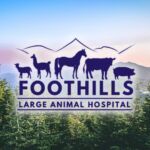The No. 1 killer of horses is colic. Colic is not a disease, but rather a combination of signs that alert us to abdominal pain in the horse. Colic can range from mild to severe, but it should never be ignored. Many of the conditions that cause colic can become life threatening in a relatively short period of time. Only by quickly and accurately recognizing colic – and seeking qualified veterinary help – can the chance for recovery be maximized.
While horses seem predisposed to colic due to the anatomy and function of their digestive tracts, management can play a key role in prevention. Although not every case is avoidable, the following guidelines from the American Association of Equine Practitioners (AAEP) can maximize the horse’s health and reduce the risk of colic:
- Establish a daily routine – including feeding and exercise schedules – and stick to it.
- Feed a high-quality diet comprised primarily of roughage.
- Avoid feeding excessive grain and energy-dense supplements. (At least half the horse’s energy should be supplied through hay or forage. A better guide is that twice as much energy should be supplied from a roughage source than from concentrates.)
- Divide daily concentrate rations into two or more smaller feedings rather than one large feeding to avoid overloading the horse’s digestive tract. Hay is best fed free-choice.
- Set up a regular parasite control program with the help of your equine practitioner.
- Provide daily exercise and/or turnout. Change the intensity and duration of an exercise regimen gradually.
- Provide fresh, clean water at all times. (The only exception is when the horse is excessively hot, and then it should be given small sips of lukewarm water until it has recovered.)
- Avoid putting feed on the ground, especially in sandy soils.
- Check hay, bedding, pasture and environment for potentially toxic substances, such as blister beetles, noxious weeds and other ingestible foreign matter.
- Reduce stress. Horses experiencing changes in environment or workloads are at high risk of intestinal dysfunction. Pay special attention to horses when transporting them or changing their surroundings such as at shows.
Virtually any horse is susceptible to colic. Age, sex and breed differences in susceptibility seem to be relatively minor. The type of colic seen appears to relate to geographic or regional differences, probably due to environmental factors such as sandy soil or climatic stress.
Importantly, this indicates that, with conscientious care and management, we have the potential to reduce and control colic, the No. 1 killer of horses.
For more information about colic prevention and treatment, ask your equine veterinarian.
Additional colic information is available by visiting the AAEP’s website at www.aaep.org/
Reprinted with permission from the American Association of Equine Practitioners.


 Phone: (828) 738-3883 | Fax: (828) 270-3213
Phone: (828) 738-3883 | Fax: (828) 270-3213